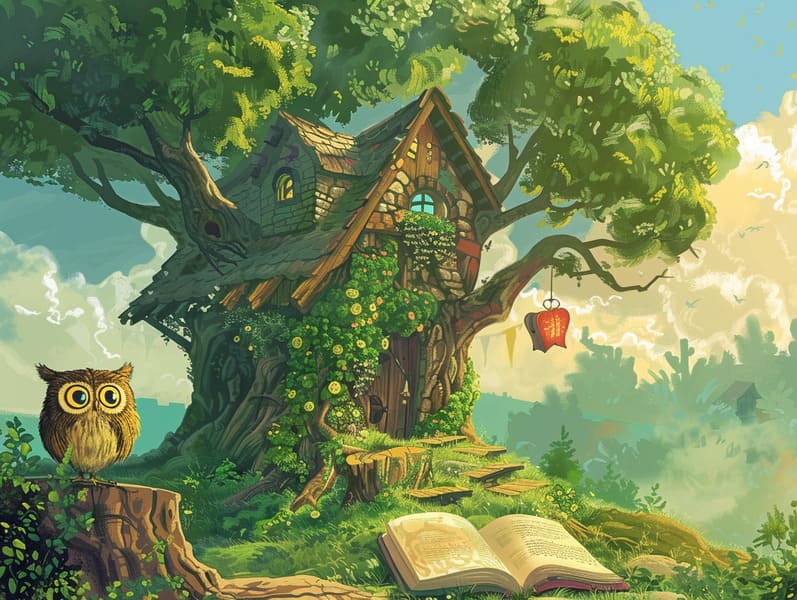The Creation of Legendary Fairy Tales with Its Unending Grandeur.
The Creation of Legendary Fairy Tales with Its Unending Grandeur.
Blog Article

Best fairy tales have old origins. These narratives have been whispered from one generation to the next millennia before they were ever recorded. They developed from a variety of civilizations, including Indigenous traditions. They were initially told among grown-ups, often carrying themes and messages reflective of the societal norms and beliefs of the time.
Jacob and Wilhelm Grimm, Jacob and Wilhelm Grimm, were among the first to collect many of these beloved narratives. Their published works, "Grimm's Fables," included tales like "The Story of Cinderella," "The Story of Hansel and Gretel," and "Snow White," which have since become mainstays in the world of children's fairy tales. Similarly, Hans Andersen's whimsical narratives, such as "The Story of the Little Mermaid," and "The Little Duckling," have captured hearts worldwide, establishing their place in the pantheon of timeless fairy tales.
Despite being ancient, these stories remain as significant as ever, especially as kids' bedtime tales. These magical stories are now available in many formats, including beautifully illustrated books, whimsical animations, and internet fairy tales.
Their enduring popularity can be traced to several delightful features:
Moral Lessons: Classic fairy tales often teach important moral lessons. Narratives like "The Story of the Boy Who Cried Wolf" teach the significance of honesty, while "The Tale of the Tortoise and the Hare" point out the benefits of perseverance and meekness. These tales offer young ones clear distinctions between correct and incorrect, shaping their moral compass in a gentle yet profound way.
Compassion and Insight: Timeless fairy tales frequently illustrate heroines facing struggles and tests, provoking listeners to identify with their struggles and support their triumphs. For instance, "Beauty and Her Beast" teaches us the significance of appreciating inner worth to understand the real character of a person, strengthening awareness and perception.
Cultural Perception: Many old fairy tales are deeply embedded in the cultural contexts from which they blossomed. Immersing in these tales can provide delightful insights into different societies, promoting a sense of cultural insight and recognition.
Imagination and Innovation: The mythical elements in classic fairy tales—magical beings—provoke children’s creative thoughts. These tales take readers to fantasy realms, provoking innovative dreams and a sense of excitement that lasts a lifetime.
Classic fairy tales are not only fantastical but also didactic. They function as alluring tools in advancing various mind and heart abilities in young readers. When timeless fairy tales are spoken, they enhance language skills by introducing new language items and elaborate sentence structures. This practice also cultivates listening abilities and attention, as the young focus on every detail, ready to see what happens next.
Furthermore, examining the themes and characters of traditional fairy tales can enhance evaluative skills and analytical skills. The young are guided to notice patterns, anticipate outcomes, and understand cause and effect. more info These explorations also advance young readers speak out their thoughts and feelings, adding to their emotional intelligence.
In today’s digital age, the existence of digital storybooks has made these fairy tales more available than ever. Websites and software supply large libraries of classic fairy tales that can be read or listened via anytime, anywhere. Fairy tales told out loud are particularly prevalent, sharing an enjoyable way for the young to appreciate these captivating stories. Sound books and read-to-me videos guide characters and settings to life, often paired with bewitching soundtracks and music that intensify the tale-telling adventure.
The unfading fascination of classic fairy tales lies in their ability to evolve to present days while keeping their basic principles. Contemporary versions of these narratives often present more varied characters and modern settings, making them meaningful to today’s audience. However, the essential messages of fortitude, understanding, and even-handedness remain unchanged, continuing to resonate with young readers of all ages.
Traditional fairy tales also offer a sense of protection and familiarity. They offer a neat narrative with a unmistakable beginning, middle, and end, often concluding with the finalization of conflicts and the triumph of morality over immorality. This consistency can be easing for the young, extending a sense of reliability in an unstable world.
Traditional fairy tales continue to mesmerize and coach new generations, maintaining their appeal and pertinence in modern society. As nighttime stories for kids, they yield a perfect blend of allure and teaching, facilitating moral values, empathy, and creativity. The abundance of internet fairy tales and the likability of fairy tales read aloud validate that these old narratives remain obtainable to new generations.
By perpetuating and imparting these tales, we continue to revere the rich tapestry of tales and cultural heritage. Whether you are reading a vibrantly illustrated book, viewing a electronic collection, or listening to an spoken story, the enchantment of famous fairy tales is always within reach. These fairy tales convey of the unchanging influence of stories and its ability to join us across generations and cultures.
Regardless if you are exploring a vividly illustrated book, browsing a digital collection, or listening through an read-aloud book, the beauty of famous fairy tales is always within reach.
These fairy tales reveal of the unfading magic of stories and its ability to join us across time and space, forming a connection that fascinates and enlightens alike.